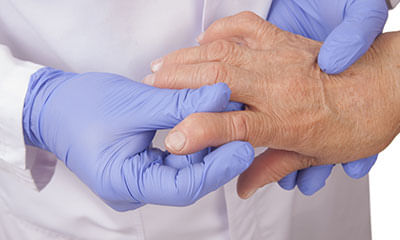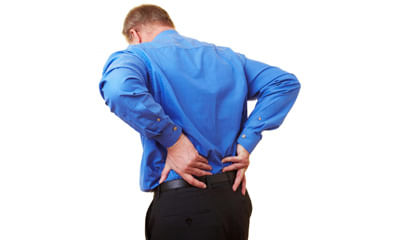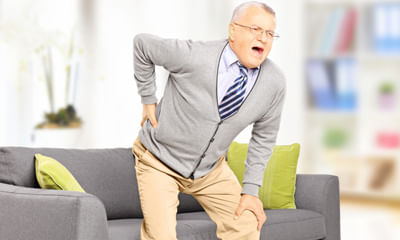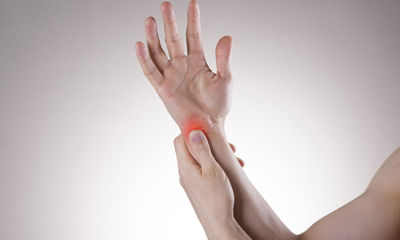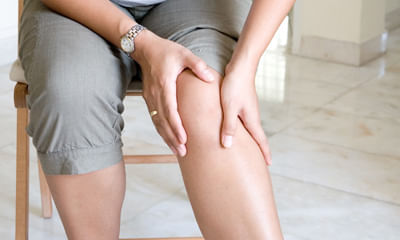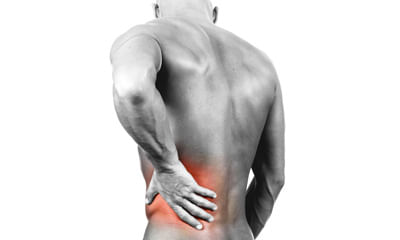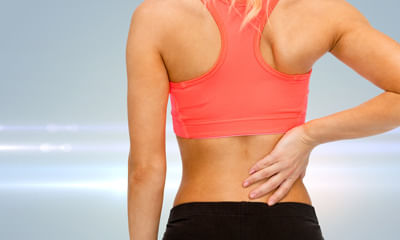Nerve Pain After Spinal Fusion
My mother have rheumatoid arthritis since 5 year. Now she get unbearable join pain. In last 6 month she has medical hist ...
Ask Free Question
The "normal" range (or negative test result) for rheumatoid factor is less than 14 iu/ml. Any result with values 14 iu/ml or above is considered abnormally high, elevated, or positive. Treatmentthere is no cure for rheumatoid arthritis. But clinical studies indicate that remission of symptoms is more likely when treatment begins early with medications known as disease-modifying antirheumatic drugs (dmards). Medicationsthe types of medications recommended by your doctor will depend on the severity of your symptoms and how long you've had rheumatoid arthritis. •nsaids. Nonsteroidal anti-inflammatory drugs (nsaids) can relieve pain and reduce inflammation. Over-the-counter nsaids include ibuprofen (advil, motrin ib) and naproxen sodium (aleve). Stronger nsaids are available by prescription. Side effects may include stomach irritation, heart problems and kidney damage. •steroids. Corticosteroid medications, such as prednisone, reduce inflammation and pain and slow joint damage. Side effects may include thinning of bones, weight gain and diabetes. Doctors often prescribe a corticosteroid to relieve acute symptoms, with the goal of gradually tapering off the medication. •disease-modifying antirheumatic drugs (dmards). These drugs can slow the progression of rheumatoid arthritis and save the joints and other tissues from permanent damage. Common dmards include methotrexate (trexall, otrexup, others), leflunomide (arava), hydroxychloroquine (plaquenil) and sulfasalazine (azulfidine). Side effects vary but may include liver damage, bone marrow suppression and severe lung infections. •biologic agents. Also known as biologic response modifiers, this newer class of dmards includes abatacept (orencia), adalimumab (humira), anakinra (kineret), baricitinib (olumiant), certolizumab (cimzia), etanercept (enbrel), golimumab (simponi), infliximab (remicade), rituximab (rituxan), sarilumab (kevzara), tocilizumab (actemra) and tofacitinib (xeljanz). These drugs can target parts of the immune system that trigger inflammation that causes joint and tissue damage. These types of drugs also increase the risk of infections. In people with rheumatoid arthritis, higher doses of tofacitinib can increase the risk of blood clots in the lungs. Biologic dmards are usually most effective when paired with a nonbiologic dmard, such as methotrexate. Therapy your doctor may send you to a physical or occupational therapist who can teach you exercises to help keep your joints flexible. The therapist may also suggest new ways to do daily tasks, which will be easier on your joints. For example, you may want to pick up an object using your forearms. Assistive devices can make it easier to avoid stressing your painful joints. For instance, a kitchen knife equipped with a hand grip helps protect your finger and wrist joints. Certain tools, such as buttonhooks, can make it easier to get dressed. Catalogs and medical supply stores are good places to look for ideas. Surgeryif medications fail to prevent or slow joint damage, you and your doctor may consider surgery to repair damaged joints. Surgery may help restore your ability to use your joint. It can also reduce pain and improve function. Rheumatoid arthritis surgery may involve one or more of the following procedures: •synovectomy. Surgery to remove the inflamed lining of the joint (synovium) can be performed on knees, elbows, wrists, fingers and hips. •tendon repair. Inflammation and joint damage may cause tendons around your joint to loosen or rupture. Your surgeon may be able to repair the tendons around your joint. •joint fusion. Surgically fusing a joint may be recommended to stabilize or realign a joint and for pain relief when a joint replacement isn't an option. •total joint replacement. During joint replacement surgery, your surgeon removes the damaged parts of your joint and inserts a prosthesis made of metal and plastic. Surgery carries a risk of bleeding, infection and pain. Discuss the benefits and risks with your doctor. Rheumatoid arthritis multiple joint pains / early morning painit is called as rheumatic arthritis. Treatment goals •to protect the joint from further damages. •provide pin relief. •prevent deformity and disabilities. •increase functional capacity. •improve flexibility and strength. •encourage regular exercise. •improve general fitness. Physiotherapy modalities - hot/cold applications- electrical stimulation- hydrotherapy and spa therapy rehabilitation treatment technique - rest and splinting - compression gloves - assistive devices and adaptive equipment - massage therapy - therapeutic exercise - patient education assistive devices and adaptive equipment occupational therapy improves functional ability in patients with ra. Occupational therapy interventions such as assistive devices and adaptive equipments have beneficial effects on joint protection and energy conservation in arthritic patients.Assistive devices are used in order to reduce functional deficits, to diminish pain, and to keep patients' independence and self-efficiency. Loading over the hip joint may be reduced by 50% by holding a cane. In fact, most of these instruments are originally designed for patients with neurologic deficits; therefore, certain adaptations may be needed for them to be used in patients with arthritis. Elevated toilet seats, widened gripping handles, arrangements related with bathrooms, etc. Might all facilitate the daily life. The procedures needed to increase compliance of the patient with the environment and to increase functional independence are +mainly determined by the occupational therapist. Massage therapy that improves flexibility, enhances a feeling of connection with other treatment modalities, improves general well being, and can help to diminish swelling of inflamed joints. Massage is found to be effective on depression, anxiety, mood, and pain. Therapeutic exercise every joint should be moved in the rom at least once per day in order to prevent contracture. In the case of acutely inflamed joints, isometric exercises provide adequate muscle tone without exacerbation of clinical disease activity. Moderate contractures should be held for 6 seconds and repeated 5–10 times each day. Dynamic exercise therapy in improving joint mobility, muscle strength, aerobic capacity and daily functioning in patients with rheumatoid arthritis (ra). Finally, in chronic stage with inactive arthritis, conditioning exercises such as swimming, walking, and cycling with adequate resting periods are recommended. They increase muscle endurance and aerobic capacity and improve functions of the patient in general, and they also make the patient feel better. It might be due to lack of blood circulation which is the reason for you to have scrotum pain / back pain. You have to do basic aerobic exercises for you to become fit and also to maintain the blood circulation and tone. Patient education in patients with ra, sociopsychological factors affecting the disease process such as poor social relations, disturbance of communication with the environment, and unhappiness and depression at work are commonly encountered. The treatment of rheumatic diseases should provide education and information to their patients about their condition and the various physical therapy and rehabilitative options that are available to improve their quality of life. Passive treatments for rheumatoid arthritis •cold therapy reduces circulation, which ultimately decreases swelling. For example, a cold compress may be placed on the painful area. •cold therapy in acute phase •dosage 10-20mints/1-2 times a day. •heat therapy eases muscle tension and gets blood to flow more quickly to the painful area. For example, a moist, warm cloth may be used to promote circulation. •heat therapy in chronic phase •dosage 20-30mints/1-2 times a day. •hydrotherapy involves reducing your ra-related pain and other symptoms with water. With hydrotherapy, you will be submerged in warm water to relieve your symptoms. •massage can help reduce muscle tension and promote good circulation. It's also a fantastic way to help you manage stress (especially important for people with rheumatoid arthritis). •transcutaneous electrical nerve stimulation (tens) works by blocking pain signals from getting to your spinal cord. It also helps decrease muscle spasms. •tens short term pain relief (6 to 18 hrs) •ultrasound creates warmth using sound waves, whichenchanes circulation and decreases joint pain, inflammation, and stiffness. Exercise for acute phase: •preformed exercise at least once a day. •general assisted movement through normal range (joint mobilisation). •isometric-“static movements” helps to maintain muscle tone without increasing inflammation. Exercise for the chronic phase: •can progress the above exercise to include use of light resistance. •postural/core stability exercises. •swimming/walking/cycling to maintain cardiovascular fitness. •gentle stretch for areas that become tight, such as knees &calves. Regular exercises: •maintaing muscle strength is important for joint stability & preventing injury. •muscles can become weak following reduced activity. •pain signals from yours nerves and swelling can both inhibits muscles. •muscle length can be affected by prolonged positions immobilization and tightness can limit daily activities. Alternative therapies: •thi chi. •musical therapy. •yoga therapy. •relaxation techniques. •pilates. Active treatments for rheumatoid arthritis •flexibility and strengthening exercises improve your range of motion and help you build muscle strength. Yoga and pilates are flexibility and strengthening exercises. •low-impact aerobic exercise is gentle but effective at helping you manage rheumatoid arthritis symptoms. Light walking is an example of this type of exercise. Your physical therapist will let you know how often to do these exercises. For example, you may need to do a few specific exercises 3 times a day, or your physical therapist may recommend a routine that incorporates 30 minutes of low-impact aerobic exercise a day and 30 minutes of strengthening exercises every other day. If your pain is more in the proximal joints, ie.in the upper limbs if the pain is present in the fingers/wrist and in the lower limbs it the pain is present in the toes/ ankle, then we shall definitely say it is rheumatic arthritis. Wear elbow brace and wrist brace which will make her to feel warm and that will make the joints become firm. Hot water fermentation will helpknee cap will also help to prevent the damaged cartilagesif your pain is more in the distal joints, ie. In the upper limbs if the pain is present in the fingers/wrist and in the lower limbs it the pain is present in the toes/ ankle, then we shall definitely say it is rheumatic arthritis. If your proximal joints (ie. Shoulder, hip & knee has pain) then you can pour hot (warm) water in that area to reduce the inflammation. If you have pain in the distal joints ie. Wrist, fingers, ankle, toes then you can wear either elbow brace or wrist brace which will help you to feel warm and very protective. And also immerse the distal joints in the hot water tub which will help you to reduce the pain. Knee pain during driving or watching movie. It might due to lack of movements in the knee while the joints are immobilized during driving and while watching movies. It is important that you need to have movements in and around the knee so that the blood flow will not be disturbed.
I have pain in the lower part of backbone just above the hip in the right side .from last seven days it is continuously ...
Ask Free Question
Anterior pelvic tilt 1.Lie on the back with the knees bent and feet flat on the floor, hip-width apart. 2.Squeeze the buttocks and tilt the pelvis upward. 3.The back should feel as though it is flattening to the ground. 4.Return to normal pelvis position. 5.Repeat 10–12 times 6..tb spine -spinal fusion surgery •tens (transcutaneous electrical neuromuscular stimulation) •aquatic therapy •overground training (walking program) •aerobic exercise •trunk strengthening studies examining the use of tens have shown higher frequencies are more effective in decreasing neuropathic pain. Aerobic exercise, pt, and trunk strengthening interventions have pt managment post-spinal decompression surgery •spinal stabilization exercises •maitland •back school •exercise and strengthening when compared with other physical therapy treatments and self-managment, spinal stabilization exercises were found to produce significantly more positive ratings in global outcomes. Pain and disability, however, did not show significant improvement when compared to the other two treatment options.[13] pt managmentpostall attained significant decreases in pain, psychological distress and disability.[14] postural correction exercise 1. Child’s pose this resting pose stretches and lengthens your spine, glutes, and hamstrings. The child’s pose helps to release tension in your lower back and neck. To do this: 1.Sit on your shinbones with your knees together, your big toes touching, and your heels splayed out to the side. 2.Fold forward at your hips and walk your hands out in front of you. 3.Sink your hips back down toward your feet. If your thighs won’t go all the way down, place a pillow or folded blanket under them for support. 4.Gently place your forehead on the floor or turn your head to one side. 5.Keep your arms extended or rest them along your body. 6.Breathe deeply into the back of your rib cage and waist. 7.Relax in this pose for up to 5 minutes while continuing to breathe deeply. 2. Forward fold this standing stretch releases tension in your spine, hamstrings, and glutes. It also stretches your hips and legs. While doing this stretch, you should feel the entire back side of your body opening up and lengthening. To do this: 1.Stand with your big toes touching and your heels slightly apart. 2.Bring your hands to your hips and fold forward at your hips. 3.Release your hands toward the floor or place them on a block. Don’t worry if your hands don’t touch the ground — just go as far as you can. 4.Bend your knees slightly, soften your hips joints, and allow your spine to lengthen. 5.Tuck your chin into your chest and allow your head to fall heavy to the floor. 6.Remain in this pose for up to 1 minute. 3. Cat cow practicing cat cow stretches and massages your spine. It also helps to relieve tension in your torso, shoulders, and neck while promoting blood circulation. To do this: 1.Come onto your hands and knees with your weight balanced evenly between all four points. 2.Inhale to look up, dropping your abdomen down toward the ground as you extend your spine. 3.Exhale and arch your spine toward the ceiling and tuck your chin into your chest. 4.Continue this movement for at least 1 minute. 4. Standing cat cow doing the cat cow stretch while standing helps to loosen up tightness in your back, hips, and glutes. To do this: 1.Stand with your feet about hip-width apart with a slight bend in your knees. 2.Extend your hands in front of you or place them on your thighs. 3.Lengthen your neck, bring your chin toward your chest, and round your spine. 4.Then look up, lift your chest, and move your spine in the opposite direction. 5.Hold each position for 5 breaths at a time. 6.Continue this movement for a few minutes. 5. Chest opener this exercise allows you to open and stretch your chest. This is especially useful if you spend most of your day sitting, which tends to make your chest move inward. Strengthening your chest also helps you stand up straighter. To do this: 1.Stand with your feet about hip-width apart. 2.Bring your arms behind you and interlace your fingers with your palms pressing together. Grasp a towel if your hands don’t reach each other. 3.Keep your head, neck, and spine in one line as you gaze straight ahead. 4.Inhale as you lift your chest toward the ceiling and bring your hands toward the floor. 5.Breathe deeply as you hold this pose for 5 breaths. 6.Release and relax for a few breaths. 7.Repeat at least 10 times. Ready to see how this all fits into an exercise plan? Check out our guide for better posture in 30 days. 6. High plank the high plank pose helps to relieve pain and stiffness throughout your body while strengthening your shoulders, glutes, and hamstrings. It also helps you develop balance and strength in your core and back, both important for good posture. To do this: 1.Come onto all fours and straighten your legs, lift your heels, and raise your hips. 2.Straighten your back and engage your abdominal, arm, and leg muscles. 3.Lengthen the back of your neck, soften your throat, and look down at the floor. 4.Make sure to keep your chest open and your shoulders back. 5.Hold this position for up to 1 minute at a time. 7. Side plank you can use a side plank to maintain the neutral alignment of your spine and legs. This energizing pose works the muscles in your sides and glutes. Strengthening and aligning these muscles helps to support your back and improve posture. To do this: 1.From a high plank position, bring your left hand slightly in to center. 2.Shift your weight onto your left hand, stack your ankles, and lift your hips. 3.Place your right hand on your hip or extend it up toward the ceiling. 4.You can drop your left knee down to the floor for extra support. 5.Engage your abdominals, side body, and glutes as you maintain this pose. 6.Align your body in a straight line from the crown of your head to your heels. 7.Look straight ahead of you or up toward your hand. 8.Hold this pose for up to 30 seconds. 9.Repeat on the opposite side. 8. Downward-facing dog this is a forward bend that can be used as a resting pose to balance out your body. The downward-facing dog pose helps to relieve back pain, while also strengthening and aligning your back muscles. Practicing it regularly helps to improve posture. To do this: 1.Lying with your stomach on the floor, press into your hands as you tuck your toes under your feet and lift your heels. 2.Lift your knees and hips to bring your sitting bones up toward the ceiling. 3.Bend your knees slightly and lengthen your spine. 4.Keep your ears in line with your upper arms or tuck your chin all the way into your chest. 5.Press firmly into your hands and keep your heels slightly lifted. 6.Remain in this pose for up to 1 minute. 9. Pigeon pose this is a hip opener that also loosens up your spine, hamstrings, and glutes. The pigeon pose can also help to stretch your sciatic nerve and quadriceps. Opening and stretching these places in your body makes it easier to correct imbalances in your posture. To do this: 1.Come down on all fours with your knees below your hips and your hands a little bit in front of your shoulders. 2.Bend your right knee and place it behind your right wrist with your right foot angled out to the left. 3.Rest the outside of your right shin on the floor. 4.Slide your left leg back, straighten your knee, and rest your thigh on the floor. 5.Make sure your left leg extends straight back (and not to the side). 6.Slowly lower your torso down to rest on your inner right thigh with your arms extended in front of you. 7.Hold this position for up to 1 minute. 8.Slowly release the position by walking your hands back toward your hips and lifting your torso. 9.Repeat on the left side. 10. Thoracic spine rotation this exercise relieves tightness and pain in your back while increasing stability and mobility. To do this: •come onto all fours and sink your hips back down to your heels and rest on your shins. •place your left hand behind your head with your elbow extended to the side. •keep your right hand under your shoulder or bring it to center and rest on your forearm. •exhale as you rotate your left elbow up toward the ceiling and stretch the front of your torso. •take one long inhale and exhale in this position. •release back down to the original position. •repeat this movement 5 to 10 times. •repeat on the opposite side. 11. Glute squeezes this exercise helps to strengthen and activate your glutes while relieving lower back pain. It also improves the functioning and alignment of your hips and pelvis, leading to better posture. To do this: 1.Lie on your back with your knees bent and your feet about hip-distance apart. 2.Keep your feet about a foot away from your hips. 3.Rest your arms alongside your body with your palms facing down. 4.Exhale as you bring your feet closer to your hips. 5.Hold this position for 10 seconds and then move them further away from your hips. 6.Continue this movement for 1 minute. 7.Do this exercise a few times per day. 12. Isometric rows this exercise helps to relieve pain and stiffness from sitting in one place for too long. Isometric pulls work your shoulder, arm, and back muscles, giving you the strength to maintain good posture. To do this: 1.Sit in a chair with a soft back. 2.Bend your arms so your fingers are facing forward and your palms are facing each other. 3.Exhale as you draw your elbows back into the chair behind you and squeeze your shoulder blades together. 4.Breathe deeply as you hold this position for 10 seconds. 5.On an inhale, slowly release to the starting position. 6.Repeat this movement for 1 minute. 7.Do this exercise several times throughout.
Disco osteophytes bulge with right paracentral prominence c6-7 level causing narrowing of canal abutting bilateral c7 ex ...
Ask Free Question
Since when r you having this pain? What r other symptoms that you r experiencing? By doing what like walking, exertion, eating or empty stomach- it increases or decreases in intensity. For how much time the pain remains? Is there stiffness also? How is your appetite? R you constipated? I need to know more to be able to make diagnosis. U need to do tsh, cbc, serum calcium, vit d, vit b 12, x-ray of cervical spines. Try a few basic exercises to strengthen and supporting muscles. Repeat each exercise a few times, then increase the number of repetitions as the exercise gets easier. A person can ease the symptoms of cervical pain/spondylosis with a few simple neck exercises. 1. Neck stretch keep your body straight. Push your chin forward in a way that stretches the throat. Softly tense the neck muscles. Hold this for 5 seconds. Return your head to its center position. Push your head back with the chin held high, and hold for 5 seconds. Carry out 5 repetitions. 2. Neck tilt tilt your head forward so that the chin touches the chest. Softly tense the neck muscles. Hold this for 5 seconds. Return the head to a neutral position. Carry out 5 repetitions. 3. Neck tilt (side-to-side) lean your head down towards either shoulder, leading with the ear. Softly tense the neck muscles. Hold this for 5 seconds. Return your head to the center and repeat on the other shoulder. Carry out 5 repetitions. 4. Neck turn turn your head to one side as far as it remains comfortable, being sure to keep your chin at a level height. Tense your neck muscles for 5 seconds. Return the head to a central position. Repeat on the opposite side. Repeat this exercise 5 times on each side.
Diffuse annular bulge with posterior annular tear and posterior disc protrusions at l4-5 and l5-s1 levels impinging upon ...
Ask Free Question
Because the annulus has such a limited blood supply, annular tears can take quite a long time to heal on its own — 18 months to two years. The majority of doctors will start with a conservative approach to treatment, prescribing anti-inflammatory medication to relieve the pressure and possibly steroid injections to alleviate the pain. Regular physiotherapy treatments, spinal traction therapy, and physical therapy can also bring relief to individuals suffering from annular tears. if these conservative treatments are not effective, then surgical treatment may be necessary. Annular tears can be sealed off with a laser procedure to prevent any further injury. Or, a minimally invasive procedure called an endoscopic discectomy can be effective if there’s a painful loose disc fragment in an annular tear. In more severe cases, disc replacement or spinal fusion surgery can replace a damaged disc. There are also some highly advanced treatment options that are in development. For example, using a patient’s stem cells to regenerate their annular fibres. However, these treatments are only used on a case by case basis. If you are experiencing back pain that isn’t getting better with rest and a decrease in activity, then you should see your orthopaedician. Severe annular tears, when left untreated, can lead to more painful conditions, such as a herniated disc. A good treatment plan can relieve your discomfort, return you to your preferred level of activity, and keep your back healthy and pain-free.
Sir my father spinal cord compression at c5 and c6 and did operation in 2016 operation quiet well but after 2 years agai ...
Ask Free Question
From your description did not get what problems your father is having Is it pain or weakness or tingling in hands If there are above problems then you may need surgery but if no then you can give try with nerve block n physiotherapy depending on what are problems Will like to have look at recent n latest Mri reports N also speak to patient.
Sir I am suffering from a back pain from 3 year I got all the test normal what should i do, please advice me I should wo ...
Ask Free Question
For back pain you can take tablet diclofenac whenever pain increases. 1) Try lying on your side. Place a pillow between your knees to keep your spine in a neutral position and relieve strain on your back. If you need to sleep on your back, slide a pillow under your knees. Be sure to sleep on a comfortably firm mattress. 2) maintain posture-Sit upright, with your shoulders relaxed and your body supported against the back of your chair. Try putting a pillow or a rolled towel between your lower back and your seat. Keep your feet flat on the floor. 3) Physical therapists can teach you how to sit, stand, and move in a way that keeps your spine in proper alignment and alleviates strain on your back. They also can teach you specialized exercises that strengthen the core muscles that support your back. A strong core is one of the best ways to prevent more back pain in the future. In severe conditions surgery is required If a bulging disc is putting pressure on a nerve, your surgeon might recommend a discectomy to remove some disc material. Or a laminectomy might be recommended to decompress an area where there is pressure on the nerves or spinal cord. Spinal fusion may be done to help stabilize the spine.
Hi Doctors, I (28y) had L5-S1 fusion on sep 2 2016, till now I have not recovered (the big mistake I did in my life is g ...
Ask Free Question
Dear, sorry to hear about the pain you are suffering from but many a times fusion surgery becomes essential in order to prevent further compression of nerves and complete paraplegia. I do not know under what circumstances your doctor advised you the surgery as ct films are visible in the forum. However I would advice you not to forward bending for an year and star back strengthening exercises.
I have disc bulges at C4-C5 and C5-C6 levels. I have severe pain in my left mid arm between shoulder and knee. It is ver ...
Ask Free Question
Hi Disc bulges indicate some herniation impinging nerves causing radiating pains. Use of cervical collar, isometric neck exercises, anti inflammatory drugs, and if your doctor agrees, cervical traction may be needed. If this doesn't help them surgery may be advised for disc removal, fusion of spine at these cervical levels best wishes.
My father has slip disc problem due to that he is suffering from intense pain in lower back please prescribe. ...
Ask Free Question
Hi I would want to know whether an orthopedic surgeon has diagnosed the condition or is it your presumption? Backache and radiation of pain to legs or lower limbs is often called by laymen to be sciatica or due to slipped disc, when there can be a variety of other causes for low back pain syndrome. It is best assessed by a spine or orthopedic surgeon by physical check and supportive xrays/MRI before labelling it as slipped disc which is one of the common causes where intervertebral disc between 2 vertebral bodies degenerates a and protrudes out to compress adjoining nerve, or nerve root, or into spinal canal on cord itself. This often heals by conservative measures if not severe, but fee cases require surgical excision, fusion of joint space and surgery on adjacent soft tissues, foramina of facet joints where nerve emerges impingement of nerve causes acute or chronic pain symptoms. So please consult for above diagnosis and advise, treatment as necessary for your father's condition. As of now, comfortable lying in bed, application of muscle relaxant creams, fomentations, oral anti inflammatory and muscle relaxant tablets are needed. Wearing of spinal brace, avoiding forward bending, twisting of spine are usual precautions advised. Best wishes.
Hi. I have been suffering from leg pain and weird feeling in my right leg and now back back for 6 months now and I can n ...
Ask Free Question
Bhujang Asana â Lie flat on your stomach, keeping the palms out, bend the neck backward, take a deep breath and while holding it for 6 seconds, raise the chest up. Release breath and relax your body. Repeat the exercise 15 times twice daily.

